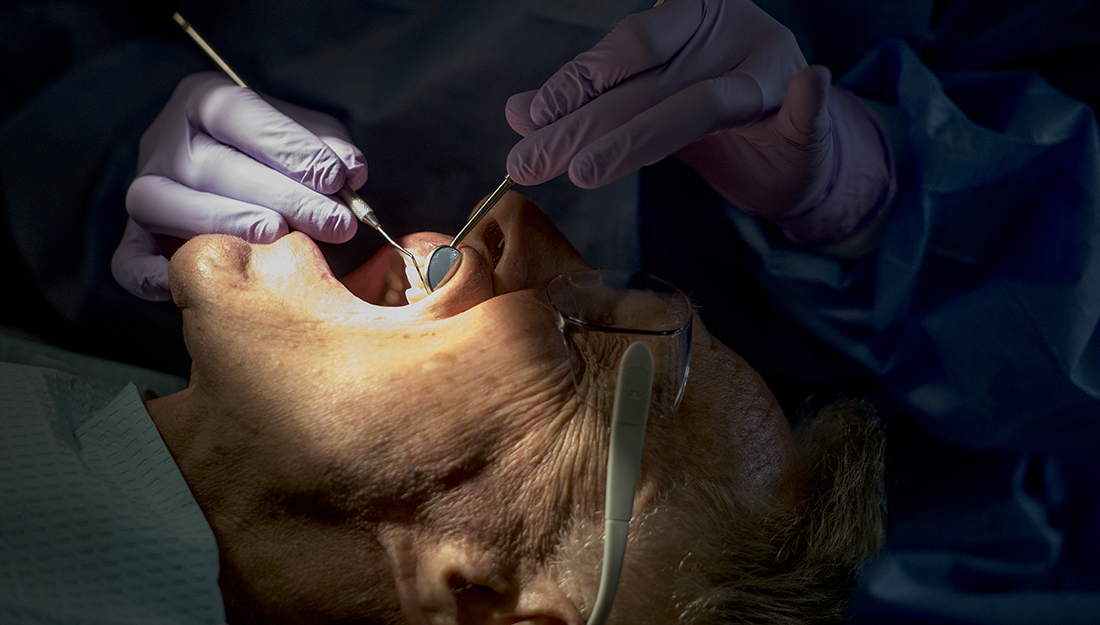- Dominic Hernandez
- Community, Dentistry, Healthy Living, Show on VR homepage, Trending
Root canal: What is it?
Your dental procedure may not deserve the ill-will

A couple of the most common comparisons to things we’d rather not do are wait in line at the DMV or have a root canal. While there’s no arguing about how tedious and painful it is to wait at the DMV, the root canal may be unfairly placed in its company. An expert from the Texas A&M College of Dentistry talks about what is involved in a root canal filling, why someone might need one and why it might not be as terrible as you expect.
What is a root canal?
“They have a bad reputation, but it really isn’t a horrible procedure,” said William Wathen, DMD, adjunct professor in general dentistry at the College of Dentistry. “The reason it gets such a bad rap is because of the tooth pain that often leads someone to the dentist.
To break down what a root canal filling is, we need to talk a bit about tooth formation. Teeth are hollow, and the root canal and nerve is inside that canal. Plaque on teeth contains germs that turn sugars and starches into acid, which demineralizes the tooth and creates a cavity. If the cavity grows larger it begins to irritate the nerve, causing swelling, irritation and—ultimately —an infection and death of the nerve.
“That infection process can cause severe pain,” Wathen said. “A root canal is a reparative filling procedure done under local anesthesia that opens into the tooth from the top, enabling painless removal the infected nerve. Specialized filling materials are then used to hermetically seal the now empty canal.”
After a root canal filling, the tooth loses its vitality (the ability to sense pain or temperature), but it will still be able to serve its purpose in the mouth.
When is the treatment needed?
A root canal filling is most commonly needed when a cavity goes untreated, but it can also be required when trauma, such as a fall or a hit to the mouth, has occurred. The trauma has to be severe enough to break the tooth down to the nerve. “It is difficult for the nerve to heal itself, so if it becomes fatally damaged, a root canal filling may be necessary to salvage the tooth” Wathen said.
During the process of a root canal filling, the hollow tooth is cleaned and smoothed out from the inside, which can leave the tooth more brittle. This is why your dentist or endodontist may put a crown on top to strengthen it.
After the root canal
After a root canal filling, oral health is extremely important. Flossing your teeth regularly and brushing twice a day with toothpaste that fights germs and keeps gums healthy can help your recovery and keep you from needing further procedures done. Your dentist may schedule another visit after your procedure to make sure that your infection is completely gone.
There may be some tenderness in the mouth or jaw for a couple of days after the local anesthesia wears off, and over-the-counter medications may be enough to limit the discomfort. Ask your dental provider if they recommend any stronger medication after the procedure.
An ounce of prevention
The best way to avoid a root canal is the simplest way.
“Get regular checkups,” Wathen said. “We fill cavities before they can get bad enough to need a root canal. Also, let your dentist know about trauma you’ve had, and if you play a contact sport—like basketball or football, wear a custom-fitted guard to protect your teeth—not a cheap one.”
Media contact: media@tamu.edu


